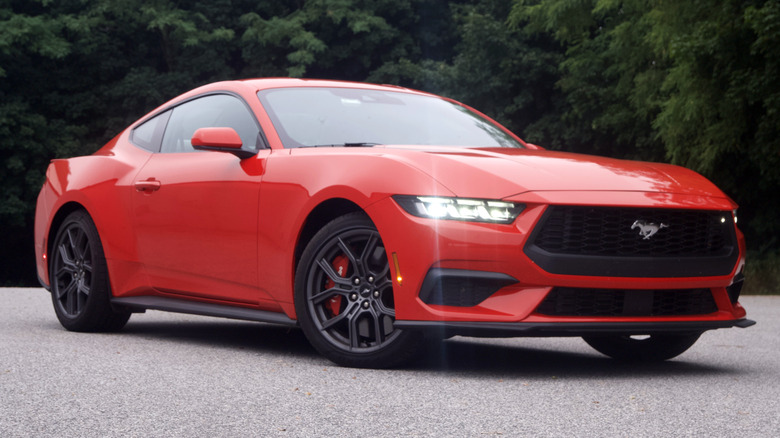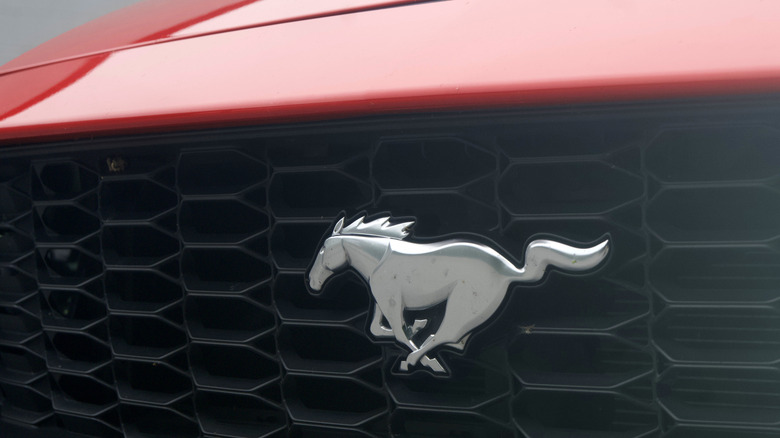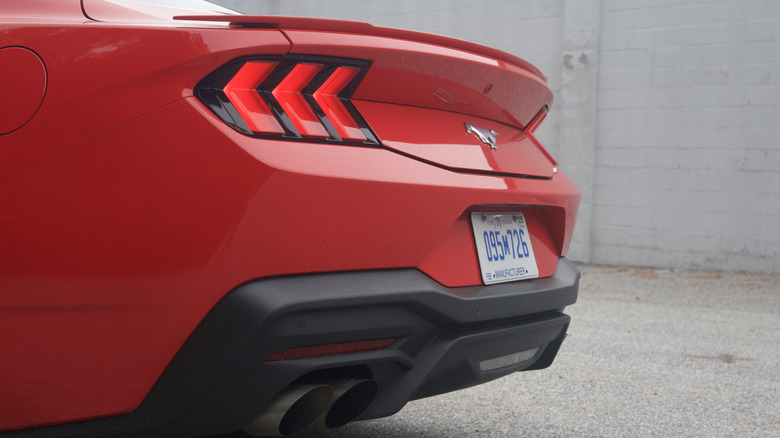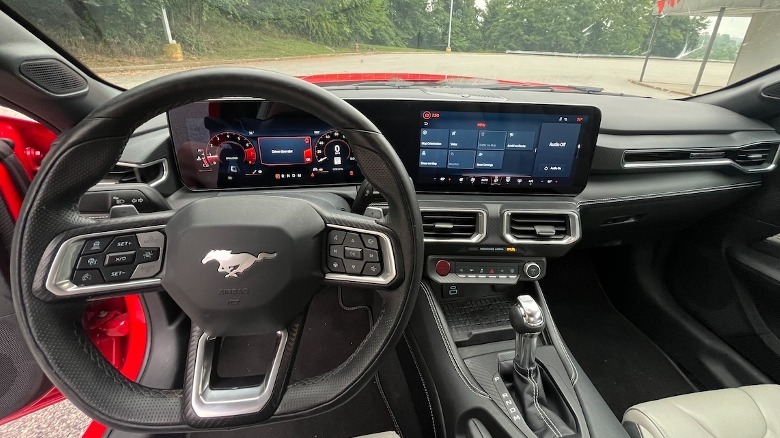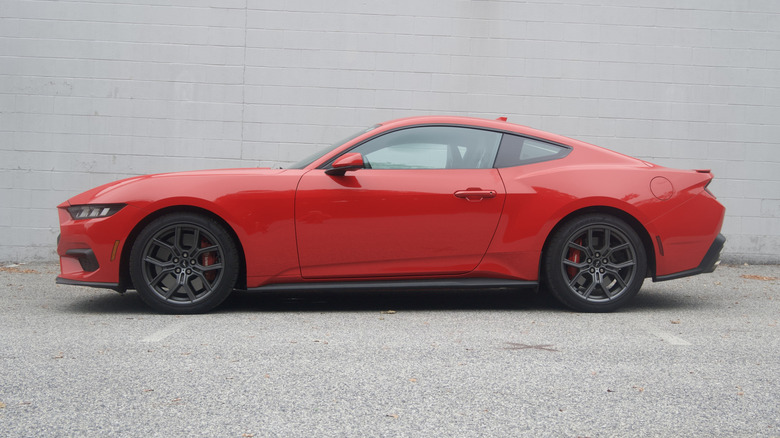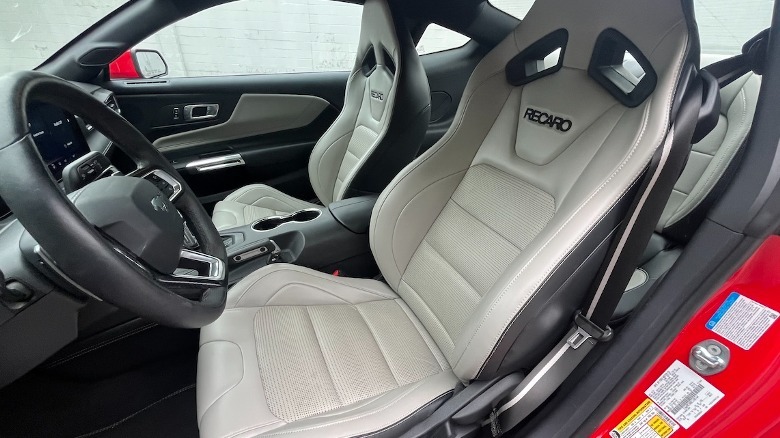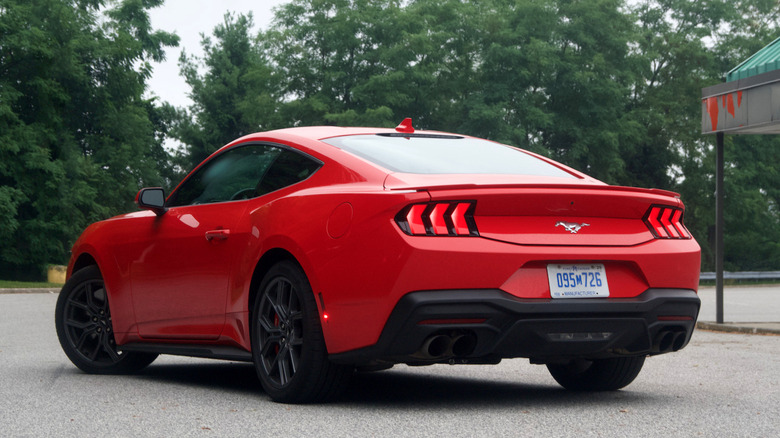2025 Ford Mustang EcoBoost: Are 4 Cylinders Enough For Muscle Car Status?
If there was a Mount Rushmore of cars, the Ford Mustang would likely be featured, along with the Volkswagen Beetle, Porsche 911, and Ford Model T. It's deeply important to the American car ecosystem and the advent of motorized transportation. You probably don't need a treatise on how vast the influence of the Mustang is. Suffice to say, whenever Ford updates the 'Stang, it needs to be good. Really good.
Despite having driven a lot of cars over the course of my career — ranging from Ferraris to Porsches, Nissans, forklifts, and everything in between — I'm not overly familiar with Ford's pride and joy. I had driven a friend's 2018 EcoBoost-powered Mustang for all of 15 minutes a number of years ago, and I had sat in the passenger seat of a number of different iterations of Ford's pony car over the years, but I had never had an extended period of time to look at one with a critical lens.
For transparency, my "week" with the 2024 Ford Mustang EcoBoost Premium was truncated to about four days. For two days out of that week, I was in Michigan driving another iconic Ford, the new 2025 Explorer; the flu caught up with me on my return, leaving me in a feverish state for about a day. That I was still able to get a good "feel" for the Mustang, then, is probably testament to Ford's steed.
Under the hood of an EcoBoost
Specifically, the Mustang I was tasked with was equipped with a 2.3-liter EcoBoost four-cylinder that threw down a stout 315 horsepower to the rear wheels. That is made possible through a 10-speed automatic transmission. The paint color, aptly called "Race Red" could likely be seen by low-flying aircraft. It definitely stood out in the sea of black and white cars that typically dot my apartment building's parking lot.
In a vacuum, a turbocharged four-cylinder rear-wheel drive coupe with north of 300 horsepower checks all the right boxes. The issue, or perhaps the perceived issue with this particular Ford is that it's a Mustang. Some may say that Mustangs aren't supposed to have only four cylinders, much less an EcoBoost under the hood: it's necessary, nay required, that the engine have eight-cylinders and a big displacement to reach true muscle car stardom.
One could argue that the Mustang was never intended to be a muscle car and would in fact be more accurately called a "pony car," hence the horse on the front badge, but I digress. The modern Mustang, however, firmly fits into the muscle car category.
Price matters
So how does the EcoBoost Mustang stack up against its muscle car brethren like the Mustang GT? Before we can wade through that mire, I need to detail what the Mustang didn't accomplish and get some numbers established. First, despite the environmentally friendly postuing behind the EcoBoost badging, the Eco-Mustang isn't particularly fuel efficient. I achieved MPGs hovering around the low-20s for the majority of my tenure behind the wheel. That's good for a fast coupe, but not stellar for a turbo four-banger.
Next, the Mustang wasn't that comfortable. This car was equipped with optional Recaro seats that, while aggressively bolstered, were not forgiving on long trips. The additional MagneRide suspension smoothed things out a bit, but the seats still felt like I was sitting on my wallet the entire trip.
Lastly, this Mustang wasn't even trying to be inexpensive. The base model Mustang, also with an EcoBoost, starts at $31,920. The Premium model starts at $37,445 and that will net you a Bang & Olufsen sound system and other interior goodies. Race Red paint adds $295; a $3,000 "Premium High Equipment Group" package gets you illuminated door sills and Ford's driver assistance features.
The 2.3L High Performance Package nets you a performance rear end, suspension tuning for days, an electric hand brake, and huge Brembo brakes. That will set you back $3,475. $200 floor mats, a $1,225 performance exhaust, $1,650 Recaro seats, and $1,750 MagneRide suspension rounds out the package to a tune of $47,745. Destination charges make that total $49,340. Ouch. A base-model Mustang GT starts at $42,680.
A Vibes Machine
Meanwhile, the Mustang GT features a 5.0-liter V8 that throws out 480 horsepower, and a six-speed manual transmission is standard equipment. For some, those two facts are all they need to hear to opt for the GT over the EcoBoost. When it comes to pure performance and statistics, there isn't even a contest that the GT is the car to pick. It also fits a very traditional and strict definition of a muscle car. It's American, it's a V8, and it's rear-wheel drive.
But when it comes to feel, that's a different question entirely. The EcoBoost captures the Mustang Vibes perfectly. You feel like you're in a fire-breathing muscle car when you're behind the wheel. The performance exhaust sounds like you're screaming down a drag strip, even though you're only going 45 miles an hour. The Race Red paint job can hijack your brain into thinking you're going top speed while sitting still. All of the goofy interior lighting and animations on the infotainment system provide the appropriate amount of sensory overload to raise your heart rate, and get you excited to throw on some Metallica and paint your nearest grocery store parking lot with a layer of rubber.
To borrow verbiage from my gen-Z colleagues, it's a Vibes Machine par excellence. Mechanically, it carries all of the fun of a tail-happy rear-wheel drive car. It's deeply, spiritually fun to be around.
All about the feeling
If I were to judge a car based purely on feeling, neglecting spreadsheets of statistics and numbers, the EcoBoost Mustang fits the muscle car bill entirely. However, we live firmly in reality. I'm confident that the EcoBoost Mustang is a muscle car, but I must add a few caveats.
The Premium trip with all of the bells and whistles is too expensive for what it is, and doesn't offer sufficient, tangible benefits that wouldn't be overshadowed by simply opting for the Mustang GT. Instead, the base-model is where the EcoBoost Mustang shines. It's a full five-figures less than the GT and you still get all the goofy fun. Despite what your Chevelle driving uncle or your 1,000 horsepower Toyota Supra driving cousin says, 300 horsepower is more than enough to have fun. The Mustang I drove could simultaneously kick the back end out whenever I wanted, and eat windy roads like they was nothing.
If you spec it out correctly, the EcoBoost Mustang is an inexpensive way to feel like a muscle car. After all, it's your car. If you feel like it's a muscle car, don't let anyone tell you otherwise. It's goofy and fun, and that's all that matters.
